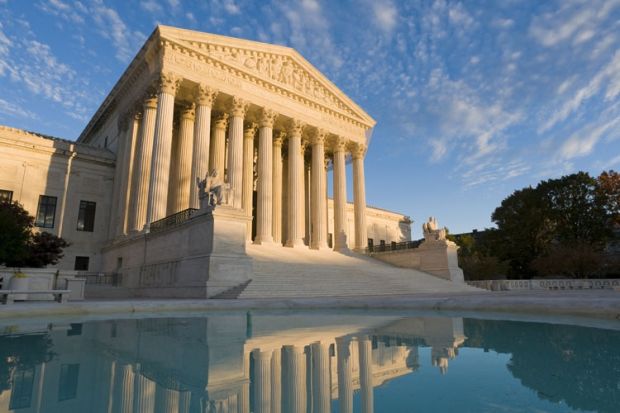The decision - written by Justice Anthony Kennedy – questions whether the US Court of Appeals for the Fifth Circuit, a federal court that had previously ruled on the Fisher vs the University of Texas at Austin case, had applied sufficient scrutiny to its judgement, and referred the case back for reconsideration.
In the case, Abigail Fisher, who is white, claimed that she was denied admission to the university five years ago because the institution’s admissions assessment process takes into account - among other factors - ethnicity.
This, the university argued, is a legal practice intended to promote the educational benefits of a racially diverse university. The plaintiff, however, said that Texas’ so-called “10 per cent rule”, which means that public universities in the state are required to admit roughly the top 10 per cent of high-school graduates regardless of race, was sufficient to ensure a sufficiently diverse student population.
The Supreme Court ruling was widely expected to have extensive implications for university admissions in the US, however it is now likely that the case will return to the Supreme Court after being re-considered by the Fifth Circuit.
Although the University of Texas at Austin has said the decision is “encouraging”, and its admissions process will for the time being remain in place, some legal experts believe that the wording of Justice Kennedy’s decision could make it very difficult for the university to justify its admission procedures.
The judge said that before institutions consider race, they should use “available, workable race-neutral alternatives”, adding that courts should ensure “a careful judicial inquiry into whether a university could achieve sufficient diversity without using racial classifications”. Some critics of the Austin stance have said the 10 per cent rule ensures a diverse student body without having to consider ethnicity.
Barbara A. Lee, a proponent of affirmative action who is dean of the School of Management and Labor Relations at Rutgers University, said in an interview with Inside Higher Ed that “it is going to be difficult, but not impossible for the university to meet the very high standard that the court set out”.
However, Bill Powers, president of the University of Texas at Austin, said his institution would continue to defend its admission policy in the lower court, saying he believed the university’s admissions policy “fully satisfied” the standards required.
“We remain committed to assembling a student body at The University of Texas at Austin that provides the educational benefits of diversity on campus while respecting the rights of all students and acting within the constitutional framework established by the court,” he said. “Today’s ruling will have no impact on admissions decisions we have already made or any immediate impact on our holistic admissions policies.”
Molly Corbett Broad, president of the American Council on Education, which represents more than 1,600 US college and university presidents, added: “Today’s ruling is a complex one, but it does make clear that colleges and universities will have work to do. Each institution will need to show that any process that considers race and ethnicity as part of a holistic admissions review is precisely tailored to meet the goals of achieving the educational benefits that flow from diversity.”




